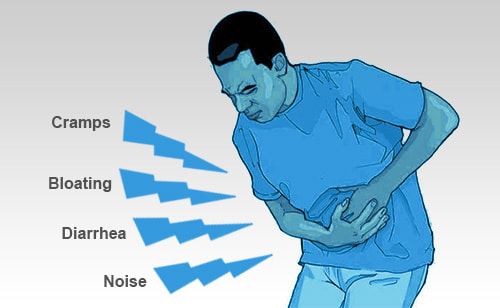What is Lactose Intolerance? By Pierre Mouchette | Bits-n-Pieces Lactose intolerance is when your body cannot break down or digest lactose, some sugar in milk and milk products. It occurs when the small intestine does not produce enough of a digestive enzyme, called lactase, that breaks down the lactose in food so that the body may absorb it. People who are lactose intolerant can have unpleasant symptoms after consuming milk or milk products. These symptoms can include bloating, diarrhea, and gas.
What causes lactose intolerance? Children and adults alike can have lactose intolerance. The following are some common causes of this condition:
What are the symptoms of lactose intolerance? Each person’s symptoms may vary. Symptoms start about 30 minutes to 2 hours after having food or drinks that have lactose. These symptoms may include:
How is lactose intolerance diagnosed? Your healthcare provider will discuss your past health and family history. They will also provide you with a physical exam. You may also be asked not to have milk or milk products to see if your symptoms improve. Some tests that can help your doctor check for lactose intolerance can include:
What About IBS? Though lactose intolerance and irritable bowel syndrome (IBS) are two different conditions, both may cause similar symptoms in people who drink or eat milk products. How is lactose intolerance treated? No treatment can help your body make additional lactase. But you can manage symptoms by changing your diet. Previously, those lactose intolerants were told to avoid all milk products. Presently, health experts suggest you try different dairy foods to see which cause fewer symptoms. In doing this, you can still get enough calcium and other essential nutrients. Lactose intolerance symptoms are unpleasant, but they will not hurt you. So try to find dairy foods that do not cause severe symptoms. The following are tips for how managing lactose in your diet:
Note: A healthcare provider should see children with lactose intolerance. Children and teenagers need dairy foods. They are a significant source of calcium for bone growth and other nutrients essential for children's health and development. Live with lactose intolerance Lactose intolerance may affect you whenever you eat a snack or meal. So it would help to be careful about the foods you eat. However, many people may tolerate a certain amount of lactose and do not need to avoid it altogether. It would be best if you read all food labels. Lactose is often added to boxed, canned, frozen, and prepared foods like:
When should I call my healthcare provider? Call your healthcare provider if you have difficulty managing symptoms. Some symptoms can be embarrassing. Your healthcare provider can work with you to help keep them under control.
0 Comments
Your comment will be posted after it is approved.
Leave a Reply. |
Archives
May 2024
|
